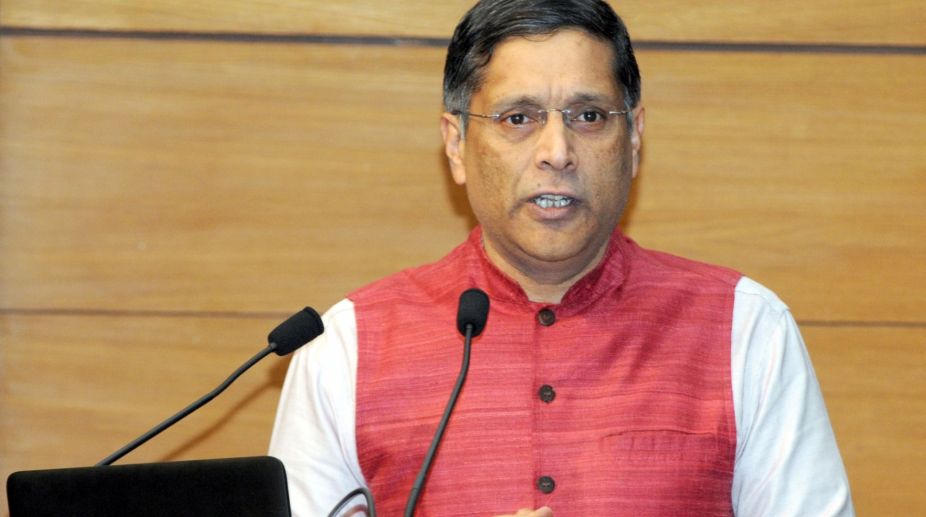Over 98% of Rs 2,000 bank notes have been returned: RBI
A total of 98.12% of the Rs 2,000 bank notes in circulation as on May 19, 2023, have been returned at the close of business on December 31, 2024.

Arvind Subramanian (PHOTO: IANS)
The spike in international crude oil price is one of the major concerns raised by chief economic adviser Arvind Subramanian in the Economic Survey 2017-18 that could dampen the growth of the Indian economy.
“High oil prices (at current levels) remain a key risk as they would affect inflation, the current account, the fiscal position and growth, and force macroeconomic policies to be tighter,” said the Survey tabled in Parliament on Monday.
Asked what could be the comfort level for the government in terms of oil prices, Mr Subramanian, at a media briefing, said on a lighter note: “Obviously the lower the better.” However, he admitted that the government had misread oil price projections completely. Mr Subramanian said: “We have misread oil prices completely. We had thought that oil prices will not go above $55 or maximum $60 per barrel. We have been proven wrong on that. We thought that shale oil will come back at about $50-55, so far it has not come back. We have discovered that the shale producers are more concerned about their profit margins than about expanding activities.
Advertisement
“A completely unforeseeable thing that has happened in Saudi Arabia is the Aramco listing is pushing oil prices higher than it is expected. The RBI has already taken this into account in its calculation of monetary policy and inflation. For consumers, what steps the government is going to take ~ it’s a political decision.”
Advertisement
The Survey pointed out that in terms of variation in oil prices, India experienced positive terms of trade shock in the last three fiscal years in terms of fiscal and current account deterioration. However, in the first three quarters of 2017-18, the oil prices have been about 16 per cent greater in dollar terms than in the previous year.
According to Mr Subramanian, the price variations in the oil market significantly impacted the Indian economy. He said that every $10 per barrel increase in oil price brings down GDP by around 0.2-0.3 percentage points and worsens the CAD (current account deficit) by about $9-10 billion dollars. The Survey highlighted that against the emerging macroexconomic concerns, policy vigilance will be
necessary in the coming year, especially if high international oil prices persist provoking a “sudden stall” in capital flows.
If the world economy maintains its growth momentum, and oil prices do not persist at current levels, the Indian economy should resume converging towards its medium-term growth potential that previous Economic Surveys have estimated to exceed 8 per cent. India would then regain its status as the fastest growing major economy, Mr Subramanian added.
India has two underlying macroeconomic vulnerabilities, its fiscal and current accounts, both of which tend to deteriorate when oil prices rise, he added.
At the same time, average oil prices are forecast by the IMF to be about 12 per cent higher in 2018-19, which will crimp real income and spending ~ assuming the increase is passed on into higher prices, rather than absorbed by the Budget through excise tax reductions or by the oil marketing companies. And if higher oil prices require tighter monetary policy to meet the inflation target, real interest rates could exert a drag on consumption.
Advertisement